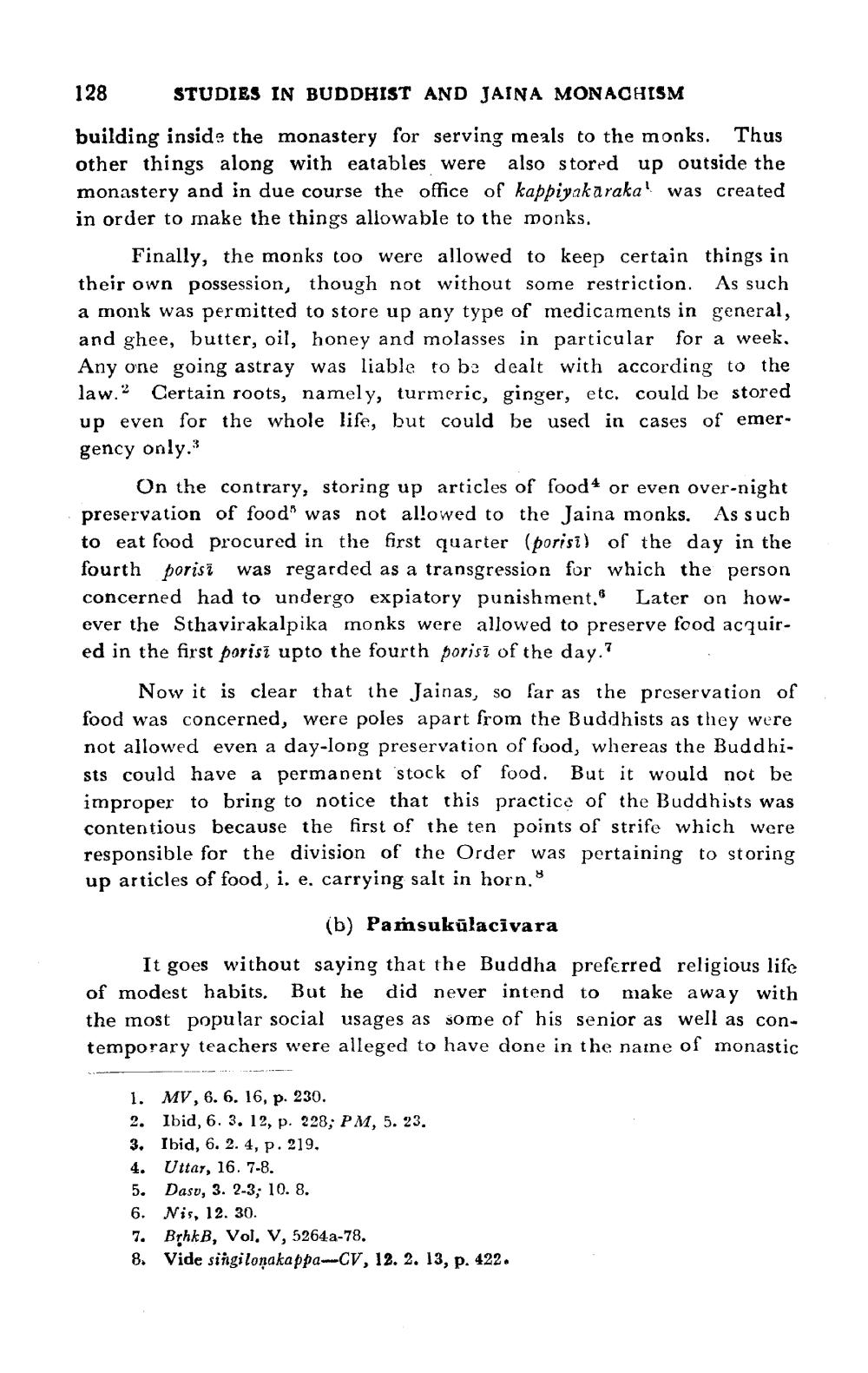________________
128
STUDIES IN BUDDHIST AND JAINA MONACHISM
building inside the monastery for serving meals to the monks. Thus other things along with eatables were also stored up outside the monastery and in due course the office of kappiyakarakal was created in order to make the things allowable to the monks.
Finally, the monks too were allowed to keep certain things in their own possession, though not without some restriction. As such a monk was permitted to store up any type of medicaments in general, and ghee, butter, oil, honey and molasses in particular for a week, Any one going astray was liable to be dealt with according to the law. Certain roots, namely, turmeric, ginger, etc. could be stored up even for the whole life, but could be used in cases of emergency only.
On the contrary, storing up articles of food 4 or even over-night preservation of food" was not allowed to the Jaina monks. As such to eat food procured in the first quarter (porisi) of the day in the fourth porisî was regarded as a transgression for which the person concerned had to undergo expiatory punishment. Later on however the Sthavirakalpika monks were allowed to preserve food acquired in the first porisi upto the fourth porisī of the day.?
Now it is clear that the Jainas, so far as the preservation of food was concerned, were poles apart from the Buddhists as they were not allowed even a day-long preservation of food, whereas the Buddhists could have a permanent stock of food. But it would not be improper to bring to notice that this practice of the Buddhists was contentious because the first of the ten points of strife which were responsible for the division of the Order was pertaining to storing up articles of food, i. e, carrying salt in horn.
(b) Pańsukūlacivara
It goes without saying that the Buddha preferred religious life of modest habits. But he did never intend to make away with the most popular social usages as some of his senior as well as contemporary teachers were alleged to have done in the name of monastic
1. MV, 6. 6. 16, p. 230. 2. Ibid, 6. 3. 12, p. 228; PM, 5. 23. 3. Ibid, 6. 2. 4, p. 219. 4. Uttar, 16. 7-8. 5. Dası, 3. 2-3; 10. 8. 6. Nis, 12. 30. 7. BrhkB, Vol. V, 5264a-78. 8. Vide singilonakappa-CV, 12. 2. 13, p. 422.




